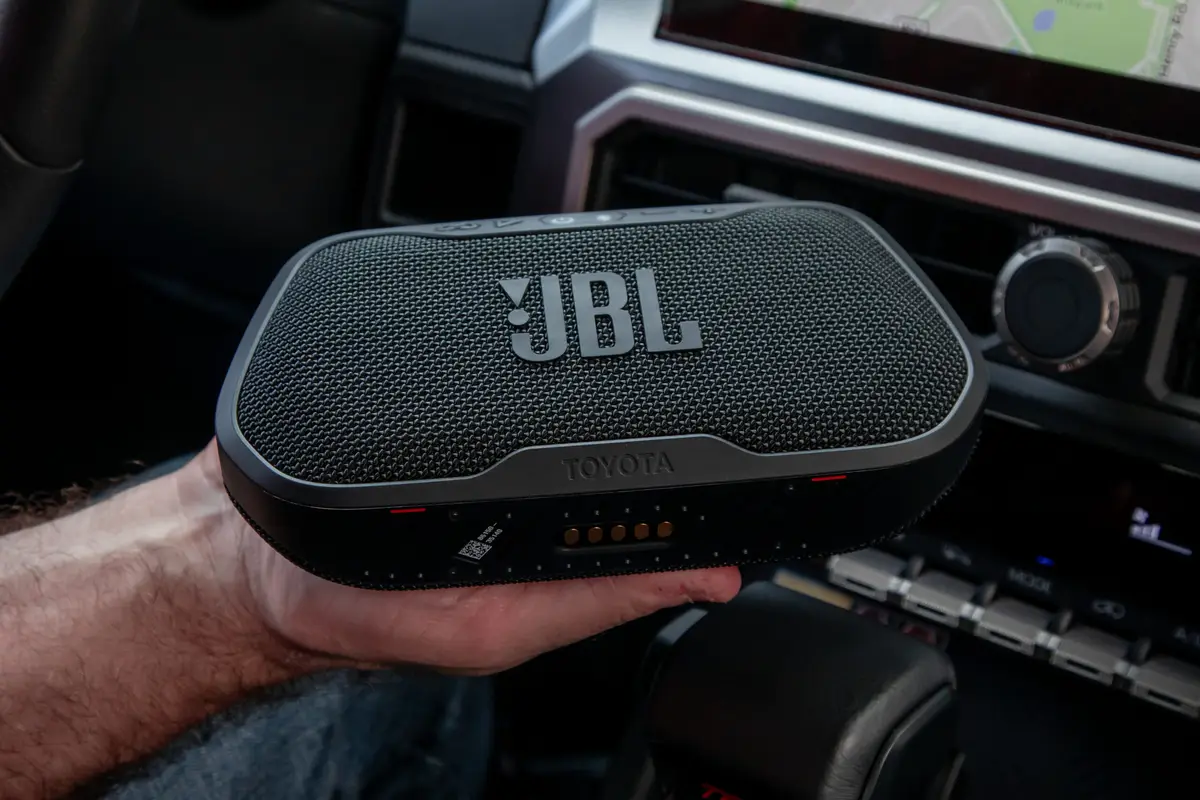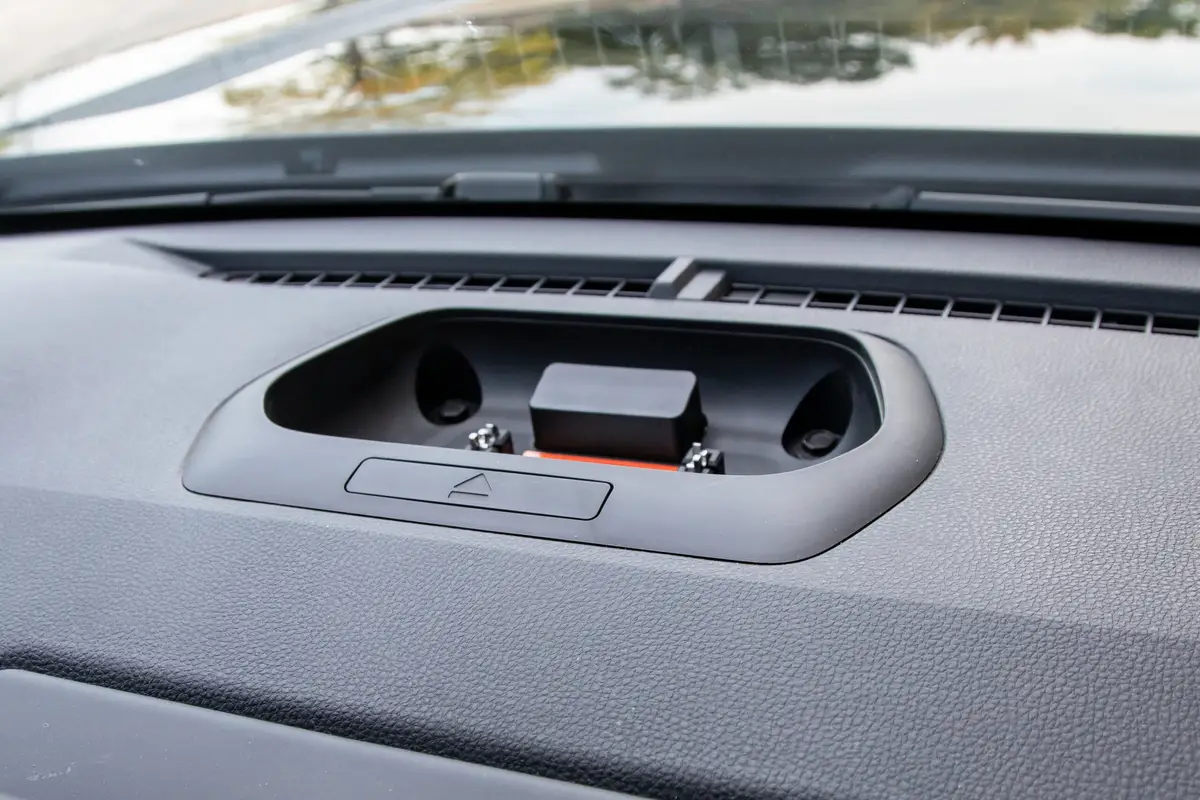Is the Toyota 4Runner's JBL Flex Portable Bluetooth Speaker Any Good?


Key Points:
- New Toyota 4Runners with the Premium Package — or the Limited trim level and higher — come equipped with a 14-speaker JBL stereo that includes a dashboard-mounted, removable Bluetooth speaker.
- When removed from the dash, the speaker functions like most portable Bluetooth speakers, has enough battery life for about six hours of use and can be charged externally, as well.
One of the neat, almost Easter egg-y features of our long-term 2025 Toyota 4Runner TRD Off-Road Premium is its removable JBL Flex portable Bluetooth speaker. It’s part of the stereo on new Limited, Platinum, TRD Pro and Trailhunter 4Runners, as well as the 4Runner TRD Sport and TRD Off-Road when equipped with the Premium Package. The speaker sits in a little recessed holder behind the central touchscreen and can be popped out with a press of a button. From there, it functions like most other portable speakers with which we’re familiar — but is it any good?
Related: More Long-Term Toyota 4Runner Coverage
Sounds Like a Portable Speaker

Key Points
- Sound quality is not great, but it does seem acceptable for a small portable speaker.
- Is there any Bluetooth speaker that sounds good? No, seriously, is there? Some of us are in the market for one.
The speaker’s sound quality seems … perfectly fine, at least to our ears. It’s not going to blow your mind, but the JBL Flex joins the list of Bluetooth speakers that can successfully play audio via a Bluetooth connection, which seems like the goal. Please drop a note via email if you have actual Bluetooth speaker recommendations, though, as I’m considering purchasing one so I can play faintly distorted Fetty Wap songs while pushing my son in his stroller or wagon.
Certainly Useful

Key Points
- The portable JBL Flex speaker is convenient, especially if parties just spontaneously happen when you’re around.
- The speaker is small, fairly light and somewhat rugged.
- It has up to six hours of battery life and can be charged externally, so you don’t have to go all the way back to your 4Runner to charge it.
I’d argue that sound quality has never been the main purpose of a small portable wireless speaker, however. Instead, this JBL Flex speaker is exactly what it should be: easy to carry, somewhat rugged with its rubberized trim and, despite its integration into our 4Runner’s dashboard, it doesn’t have to be put back in its docking area to charge; after you’ve depleted its (up to) six hours of battery life, the JBL Flex can be charged externally. Just be sure you don’t lose the speaker if you take it out; it serves as the center-channel speaker for the 4Runner’s stereo, and the gap it leaves when removed from its dock is noticeable.
More Toyota 4Runner News From Cars.com:
- How Much Cargo Space Does the 2025 Toyota 4Runner Have?
- Long-Term 2025 Toyota 4Runner Update: How Efficient Is the Hybrid After 5,000 Miles?
- Is the 2025 Toyota 4Runner Good for Families?
- Leaky Moonroof, Broken Front Air Dam Send Our Long-Term 2025 Toyota 4Runner in for Service
- What Makes Our 2025 Toyota 4Runner TRD Off-Road Premium … Well, Premium?
Is It a Good Reason to Buy a 4Runner?

Key Points
- Please do not make your car purchase decision based on the availability of a portable Bluetooth speaker.
- The JBL Flex speaker is a fun bonus feature.
The portable JBL Flex speaker in our 4Runner is a nice-to-have feature; it’s fun, can be convenient if you want to use a Bluetooth speaker often but often leave yours at home, and it has a decent battery life. It also sounds fine, which is probably the nicest thing that can be said about the sound quality of a portable Bluetooth speaker. But if you want one so badly that you’re considering spending thousands more on a higher-trim or better-equipped 4Runner, you should just buy one separately — you can purchase one for less than $100.
Related Video:
Cars.com’s Editorial department is your source for automotive news and reviews. In line with Cars.com’s long-standing ethics policy, editors and reviewers don’t accept gifts or free trips from automakers. The Editorial department is independent of Cars.com’s advertising, sales and sponsored content departments.

Road Test Editor Brian Normile joined the automotive industry and Cars.com in 2013, and he became part of the Editorial staff in 2014. Brian spent his childhood devouring every car magazine he got his hands on — not literally, eventually — and now reviews and tests vehicles to help consumers make informed choices. Someday, Brian hopes to learn what to do with his hands when he’s reviewing a car on camera. He would daily-drive an Alfa Romeo 4C if he could.
Featured stories




2026 Nissan Sentra Review: Long Live the Sedan

